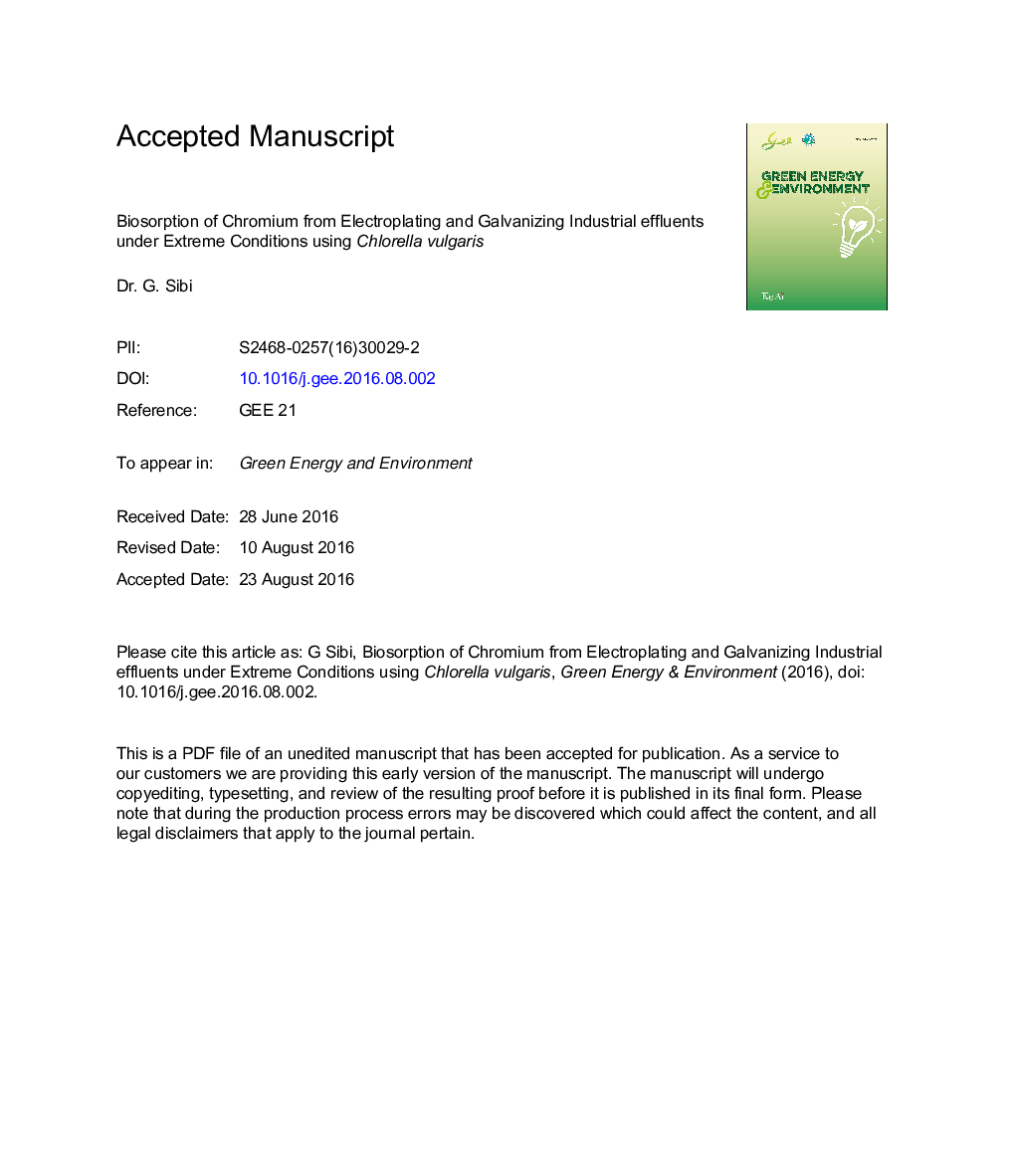| Article ID | Journal | Published Year | Pages | File Type |
|---|---|---|---|---|
| 5478757 | Green Energy & Environment | 2016 | 18 Pages |
Abstract
Hexavalent chromium [Cr(VI)] is a toxic oxidized form and an important metal pollutant in the water bodies. Biosorption of chromium(VI) offers a potential alternative to conventional metal removal methods. Dried biomass of Chlorella vulgaris was used as biosorbent for the removal of Cr(VI) from electroplating and galvanizing industry effluents as a function of biosorbent dosage, contact time, pH, salinity and initial metal ion concentration. Batch experiments were conducted for biosorption and the optimum conditions were 1Â g/L biomass, 4Â h contact time, pH 2 and 2.893 mS/cm of electrical conductivity. The chromium biosorption was strictly pH dependent with a maximum Cr removal of 63.2Â mg/L at pH 2. Highest Cr removal at a concentration of 81.3Â mg/L was observed at Electrical conductivity (EC) value of 2.893Â mS/cm. A comparison of Langmuir and Freundlich isotherm models revealed that Freundlich isotherm model fitted the experimental data based on R2, qmax and standard error values. The results suggest that C. vulgaris biomass could be considered a promising low-cost biosorbent for the removal of Cr(VI) from electroplating and galvanizing industry effluents.
Related Topics
Physical Sciences and Engineering
Energy
Energy Engineering and Power Technology
Authors
G. Sibi,
